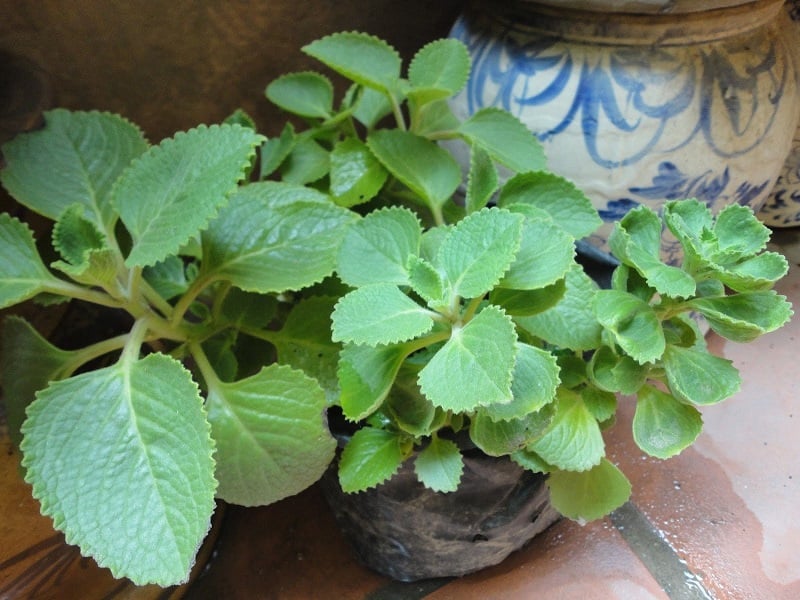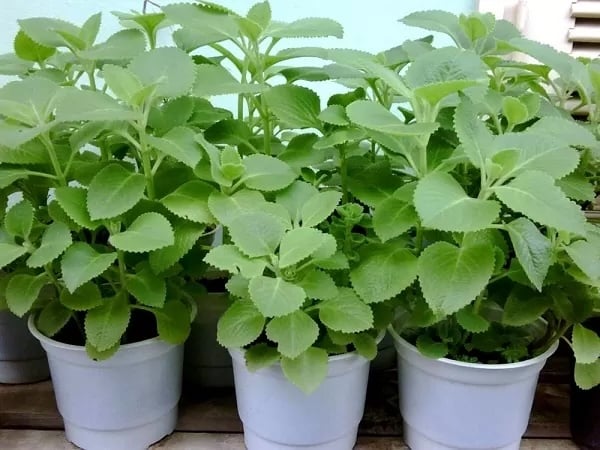## From “Poor Man’s Vegetable” to a Household Favorite
From “Poor Man’s Vegetable” to a Household Favorite
For those who have lived in rural areas, rau tần dày lá, also known as Hungarian mint or lemon basil, is a familiar sight. This wild herb used to be considered a “poor man’s vegetable” as it grew naturally without any cultivation or care.
However, in recent years, with urban dwellers embracing a greener, cleaner, and self-sufficient lifestyle, rau tần dày lá has unexpectedly become the new star of apartment balconies and even featured on the menus of vegan restaurants and health-conscious eateries.
The reason is simple: easy to grow, delicious to eat, and packed with health benefits.

A “Superfood” from Your Balcony – Rich in Vitamin C and Natural Anti-inflammatory Properties
Rau tần dày lá (Hungarian mint) may grow as effortlessly as grass, but its nutritional value is impressive. According to the publication “Cây thuốc và động vật làm thuốc ở Việt Nam” (Medicinal Plants and Animals in Vietnam) published by the Science and Technology Publishing House, 100 grams of rau tần dày contains:
- Vitamin C: 70 – 90mg, equivalent to the amount found in a medium-sized orange.
- Essential oils containing carvacrol and thymol, two compounds with natural antibiotic properties, which help expel phlegm, reduce inflammation, and kill bacteria in the respiratory tract.
- Beta-carotene (pro-vitamin A), calcium, iron, and flavonoids, which act as natural antioxidants.
Thus, besides being used as a culinary herb, Hungarian mint is also valued as a traditional medicine to boost immunity and aid in treating coughs, colds, and mild sore throats.
Grows as Fast as Grass – Harvest for a Month
Another wonderful trait of this herb is its ease of cultivation.
Simply plant a small cutting in a pot of soil and water it every morning. Within a few days, the plant will take root, and tender shoots will sprout vigorously. After just 10-12 days, you can start harvesting the leaves, and if you plant several pots and stagger the plantings, you can enjoy a continuous harvest for 30-40 days.
Free from pests and diseases and requiring no fertilizer, rau tần is the “clean-eating dream” for busy city dwellers.
“Seeing my balcony garden thrive every morning brings me joy throughout the day. My little daughter also loves helping me pluck the leaves for cooking. That feeling is priceless.” – shared Lê Hương Giang (34 years old, Ho Chi Minh City)

Food, Medicine, and Flavor: All in One
Besides being a culinary herb, rau tần dày lá is also a valuable medicinal herb in traditional medicine. According to the book “Những cây thuốc và vị thuốc Việt Nam” (Medicinal Plants and Herbs of Vietnam) by Professor Đỗ Tất Lợi, this herb is effective in expelling phlegm, reducing inflammation, and treating coughs, colds, and sore throats.
Additionally, rau tần can be used in various ways:
- Cooked in soups with eggs, tofu, or minced meat
- Brewed as a cleansing herbal tea
- Pounded and applied topically to insect bites
- Used raw in salads to accompany grilled dishes
Each preparation method offers a unique sensory experience, combining the refreshing flavors of lemon and mint.
Reconnect with Nature from Your Balcony
In an era of urbanization, growing a pot of herbs is not just about having access to clean food, but also about reconnecting with nature. As the cost of living rises, growing your own culinary herbs can be a “frugal gift” you give yourself every day.
“With just one square meter of balcony space, I can grow 5-6 different types of herbs. Watering my plants every morning helps me slow down, feel calmer, and reduce stress.” – shared Nguyễn Văn Thế (37 years old, Hanoi), an advocate of a minimalist lifestyle.
Grow, Heal, Nurture
Have You Tried Growing Rau Tần?
All it takes is a small cutting, some patience, and love for nature. Who knows, gardening might become a beloved family hobby.






























